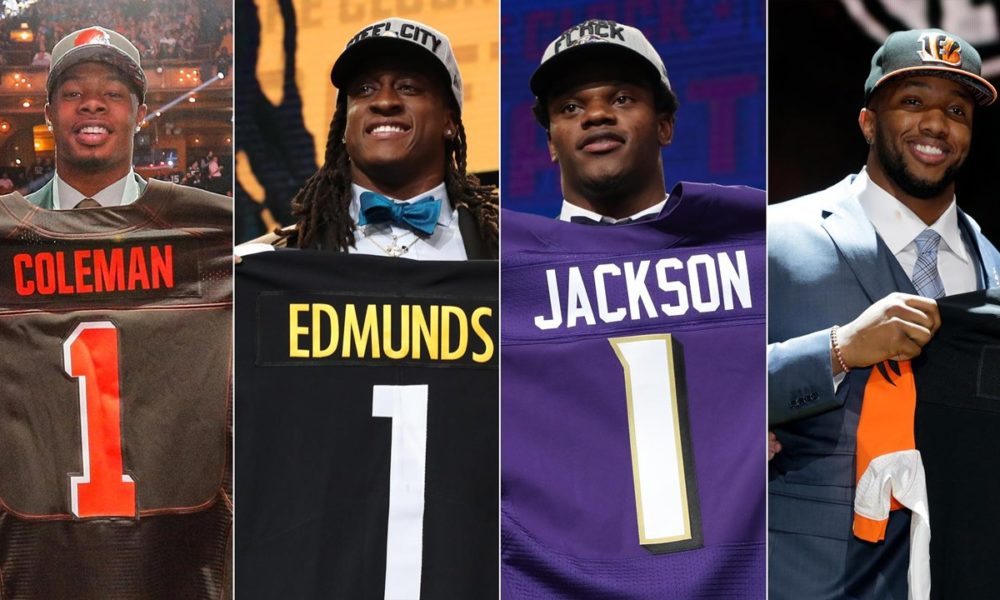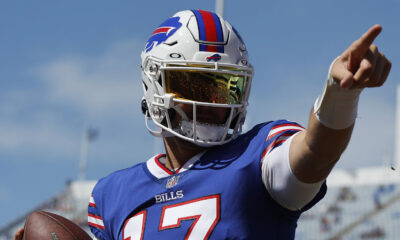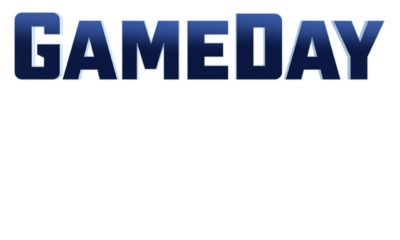
The tabulation is complete. The scouts are in the midst of their (presumably) well-earned vacations. The owners are poring over what might be, what could have been, and what their fans might be thinking.
This is the aftermath of the 2018 NFL Draft, which, according to most fans and analysts, deviated far, far from the expected order established by a wealth of mock drafts and projections. The amount of fan confusion during the draft only served to increase viewership, as the temptation to predict the next pick or discern a pattern is always a draw.
The AFCN and our user community was no different, having established itself immediately with the Browns’ first pick, which sparked consternation, confusion, elation and acceptance in equal measure. The ultimate goal of the draft and why fans have such interest in it is the endless speculation that that one guy, that one pick might somehow catapult a team to respectability, playoff contention, or perhaps (gulp!) a championship.
Here’s a brief recap of the AFCN’s draft and its potential impact on its respective teams. Enjoy.
Baltimore Ravens
Kudos to lame-duck general manager Ozzie Newsome, who defied expectations of mediocrity and produced one of his better drafts in recent memory. The Ravens began the draft with seven picks and managed to draft 12 players, including the draft’s consensus top tight end, South Carolina’s Hayden Hurst and a possible successor to incumbent quarterback Joe Flacco in Louisville’s Lamar Jackson. While Jackson is considered raw, few question his arm strength and mobility, and it will be interesting to see if (and when) he will supplant the erratic Flacco, whose errant play has far undercut his outlandish payday. Hurst will help Flacco considerably, as Flacco has always favored his tight ends and underneath options. Even with a revamped Ravens receiving corps, expect Hurst to play a substantial role in 2018, regardless of who’s throwing him the ball.
The Ravens drafted colossal tackle Orlando Brown in the third round after his disastrous Combine performance. Despite his flagging mobility, he fits a definite need for them on the right side of the line, where his primary responsibility will be run blocking, as the Ravens are professing a desire to increase their run production this season.
Also in the third round, the Ravens extended their depth at tight end by adding Oklahoma’s Mark Andrews, who may also see time by midseason in two-tight end sets. Andrews is considered more of a receiver than blocker, so he may see time in the slot as well on running downs.
The Ravens’ remaining picks seemed centered on their typical “best player available” approach, with a balance of offense and defense.
The rest:
CB Anthony Averett, ILB Kenny Young, WR Jaleel Scott, WR Jordan Lasley, S DeShon Elliott, T Greg Senat, C Bradley Bozeman, DE Zach Sieler
Cleveland Browns
Having secured the first and fourth selections, the Browns’ potential picks were hotly debated league-wide, as they’ve established a spotty history in the first round since their return to the NFL in 1999. New GM John Dorsey, considered a traditional “football man” rather than an analytics-driven evaluator, opted for Oklahoma quarterback and Heisman Trophy winner Baker Mayfield. As Mayfield is diminutive (he’s generously listed at 6’1″), the inevitable comparisons to former Brown (and legendary bust) Johnny Manziel have commenced and will continue until Mayfield gets a chance to establish his own NFL legacy. This may or may not happen this season, as he’ll be battling for playing time with free agent pickup Tyrod Taylor, whose experience may merit his winning the starting job.
The fourth selection was filled by the somewhat puzzling choice of Ohio State cornerback Denzel Ward. Ward’s talent and skills render his selection in the first round beyond debate, although cornerback wasn’t clearly a position of need for the Browns. While Ward will be an excellent player, it’s unclear how he currently fits into a crowded defensive backfield, where more changes are expected before the season’s outset.
The Browns addressed a need early in the second round with the addition of Nevada tackle Austin Corbett, who lacks ideal size but shows excellent technique. With the departure of stalwart left tackle Joe Thomas, this choice was inevitable, but necessary. Corbett may not start outside, but his move there eventually is a certainty.
While not the Chubb many fans wanted, the selection of running back Nick Chubb helps a team sporting a rookie quarterback considerably, as the Browns now will field good, versatile backfield depth. The Browns should lean heavily on the running game, and with the current group, they most likely can.
The addition of Miami defensive end Chad Thomas in the third round is obviously intended to free star defensive end Myles Garrett from additional blockers. This duo should be fun to watch and will provide a foundation for the type of aggressive, blitzing defense coordinator Gregg Williams favors.
The rest:
WR Antonio Callaway, LB Genard Avery, CB Simeon Thomas
Cincinnati Bengals
As expected, the Bengals addressed their offensive line needs early by adding Ohio State center Billy Price, who should be an immediate upgrade over the departing Russell Bodine. Price’s reputation is that he’s rather intense, which will be a big help to a team that needs a bit more adrenaline to be successful.
The selection of S Jessie Bates III in the second round wasn’t a big surprise, given the free agent visits by varying safeties during the offseason. Bates is a versatile, well-rounded safety who provides takeaway ability – sorely needed in an increasingly pass-happy league. He will most likely begin as the team’s third safety, but may claw his way up the depth chart by midseason.
The Bengals invested in their defense in the third round with the selections of defensive end Sam Hubbard and linebacker Malik Jefferson, both of whom provide excellent depth and eventual starting potential. Given that head coach Marvin Lewis has always favored frequent defensive line rotation, look for Hubbard to have more of an impact early, although Jefferson may see extended time early as well due to the seemingly perpetual suspension of troubled linebacker Vontaze Burfict.
The rest:
RB Mark Walton, CB Davontae Harris, DT Andrew Brown, CB Darius Phillips, QB Logan Woodside, G Rod Taylor, WR Auden Tate
Pittsburgh Steelers
By most reports, the Steelers were targeting inside linebackers with their first round pick, but none were available at number 28 that were worth the investment. They settled for safety Terrell Edmunds, who, to be clear, isn’t a bad ballplayer, and clearly fits a need for the Steelers – it’s just not the need they envisioned. That said, it sounds as though they will employ Edmunds in a Troy Polamalu-type role – bringing him closer to the line of scrimmage and rotating him between linebacker and safety, depending on down and distance. While Edmunds isn’t Polamalu, he does possess excellent speed and with some discipline could be effective in a hybrid scenario.
The Steelers’ trade of head-scratching wideout Martavis Bryant to Oakland enabled them to draft Oklahoma State’s James Washington. Washington has adequate speed and better hands, and the presence of emerging wideout JuJu Smith-Schuster and all-world wideout Antonio Brown will allow Washington to work in slowly. Pittsburgh seemingly has no trouble integrating receiving talent onto its roster, so expect Washington to make his presence known before midseason.
While not completely surprising, the selection of Oklahoma State quarterback (and James Washington teammate) Mason Rudolph produced some consternation. While it’s a gamble considering last season’s pickup of quarterback Josh Dobbs and the presence of longtime backup Landry Jones, the Steelers seem to have figured they had little to lose, with incumbent starter Ben Roethlisberger openly discussing retirement (he’s since recanted this) and Jones entering a contract year. At worst, Rudolph would eventually replace Jones next season as Roethlisberger’s backup; at best, he’ll eventually replace Roethlisberger himself, although this seems unlikely given Roethlisberger’s assertion that he wants to play 3-5 more years. Regardless, Rudolph will see very little time this season if any, as, barring injury or drastic performance issues, the quarterback hierarchy is already set.
The selection of tackle Chuks Okorafor was also unexpected, although quality offensive line depth is never bad to have. Okorafor has classic tackle size but heavy feet, and will be considered a work in progress this year while eyeing an eventual starting spot at right tackle.
The rest:
S Marcus Allen, RB Jaylen Samuels, DL Joshua Frazier


















Facebook
Twitter
RSS